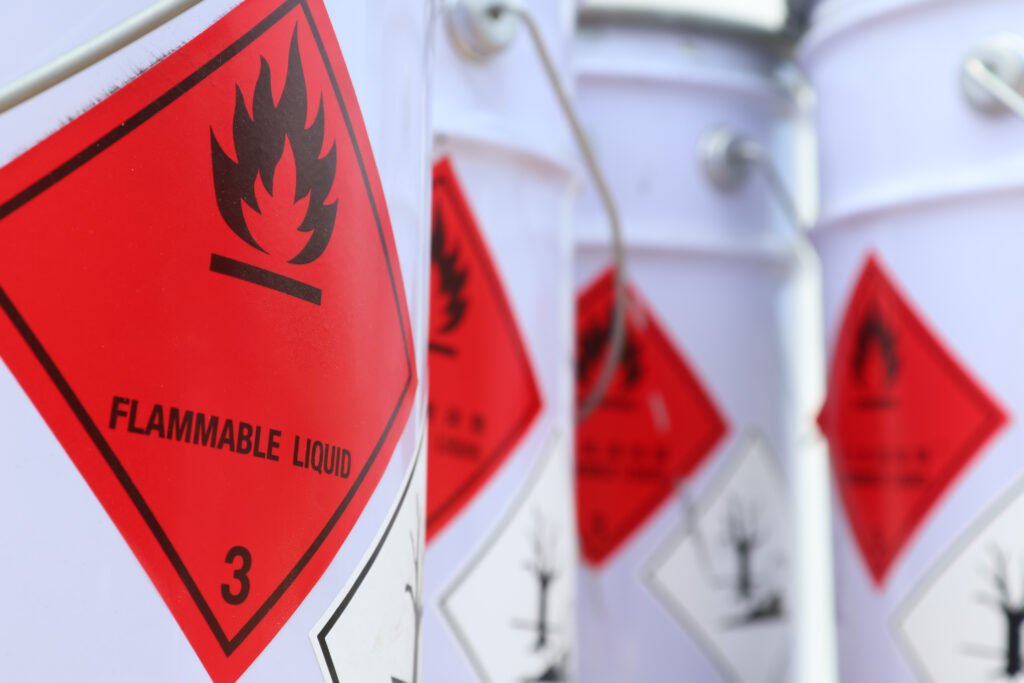On March 28, 2025, China has released the 2025 edition of its mandatory national standard, Classification and Code of Dangerous Goods (GB 6944-2025), which will take effect on Oct. 1, 2025. The standard outlines classification criteria and transport regulations for hazardous materials and replaces the 2012 version.
The updated standard provides a unified framework for identifying and managing dangerous goods during transport and related activities. It applies to all modes of transport except bulk shipments via inland waterways.
Nine Hazard Classes and Subclasses
The standard categorizes dangerous goods into nine primary classes based on their hazards, with further subdivisions in Classes 1, 2, 4, 5 and 6:
- Class 1: Explosives
Subclasses 1.1 to 1.6, ranging from mass explosion hazards to extremely insensitive articles.
1.1: Substances and articles with a mass explosion hazard
1.2: Substances and articles with a projection hazard but not a mass explosion hazard
1.3: Substances and articles with a fire hazard and either a minor blast hazard or a minor projection hazard or both, but not a mass explosion hazard
1.4: Substances and articles that present no significant hazard
1.5: Very insensitive substances with a mass explosion hazard
1.6: Extremely insensitive articles that do not have a mass explosion hazard
- Class 2: Gases
2.1: Flammable gases
2.2: Non-flammable, non-toxic gases
2.3: Toxic gases
- Class 3: Flammable Liquids
- Class 4: Flammable Solids and Reactive Substances
4.1: Flammable solids, self-reactive substances, desensitized solid explosives, and polymerizing substances
4.2: Substances liable to spontaneous combustion
4.3: Substances which, in contact with water, emit flammable gases
- Class 5: Oxidizing Substances and Organic Peroxides
5.1: Oxidizing substances
5.2: Organic peroxides
- Class 6: Toxic and Infectious Substances
6.1: Toxic substances
6.2: Infectious substances
- Class 7: Radioactive Material
- Class 8: Corrosives
- Class 9: Miscellaneous Dangerous Goods
Key Revisions in the 2025 Edition
The 2025 revision introduces several significant updates that manufacturers and importers should be aware of:
- Clearer Classification Rules: A quantitative hazard ranking system has been introduced to determine the primary classification for multi-hazard products.
- New Category for Unspecified Dangerous Goods: Items such as machinery and electronics that may contain hazardous components are now subject to classification rules.
- Stricter Handling of Samples: Even samples for testing or R&D must undergo temporary classification and meet packaging standards.
- Inclusion of New Materials: Emerging materials like sodium-ion batteries and ceramic chemicals are now covered.
- Standardized Terminology: Definitions, abbreviations and physical-chemical indicators have been aligned with international norms.
- Labeling Requirements: Multi-hazard products must now carry appropriate hazard labels.
Impact on Businesses
The revised standard places greater emphasis on correctly identifying the primary and secondary hazards of mixtures and composite materials. This includes chemicals and batteries embedded in machinery or finished products. The transport of test samples and new materials will also become more complex, making accurate labeling essential.
The full text of GB 6944-2025 is available at
http://www.yongji.gov.cn/uploadfiles/202504/29/2025042911085894038225.pdf
 China to Enforce New Dangerous Goods Classification Standard on Oct. 1, 2025
China to Enforce New Dangerous Goods Classification Standard on Oct. 1, 2025 

























